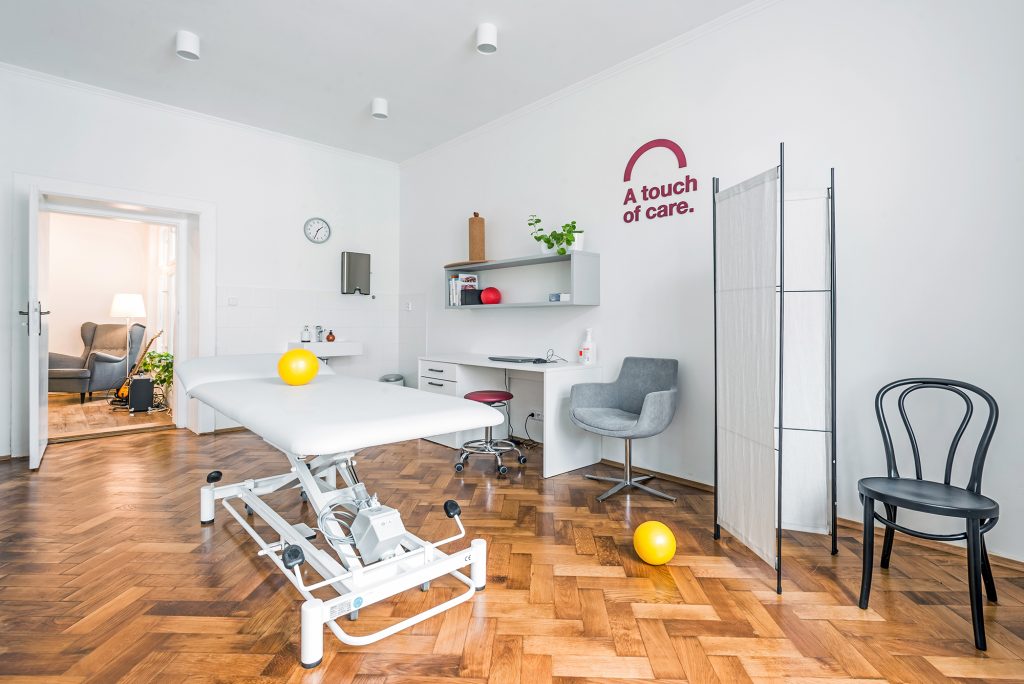Proper breathing techniques
In rehabilitation, we often address the topic of breathing. If you have issues with your back, shoulders, or cervical spine, often resulting in rib restrictions, stiffness in the neck leading to headaches, it is highly likely that you have an improper breathing pattern. There are multiple ways the body can inhale, and having these options is essential because the demands for oxygen and the methods of obtaining it change naturally based on physical exertion, body position, altitude, and individual anatomical characteristics (such as scoliosis or hyperkyphosis). The way and extent to which individual muscles engage in the breathing process also vary.
However, if the muscle work during breathing is unable to adapt and does not behave economically in response to changing external or internal conditions, muscle imbalances can arise. Excessive tension in the trunk and neck muscles, unbalanced use of abdominal and back muscles, and an inability to perceive diaphragm movement affect spinal alignment. As a result, the chest ceases to expand laterally, the thoracic spine stiffens in a hunched position, and the natural mobility of the ribs and abdominal organs is restricted. All of this manifests in the positioning of the lumbar and cervical spine due to a cascading effect.
Let’s explore how simple breathing can effectively help us.
Starting Position:
- Lie on your back with your knees bent, feet comfortably resting on the ground, ensuring your spine is aligned. Try to perceive the length of your spine from the crown of your head to your tailbone.
- The lumbar spine should rest freely on the surface—do not push it anywhere.
- Ensure that your shoulders, cervical spine, head, and face are relaxed.
- Place your fingertips in the groin area on your lower abdomen, with your thumbs gently hugging the sides of your waist.
Breath:
- In the first step, just observe your breath: its depth, speed, fluidity, and location.
- Next, try to direct your inhalation into your chest; you can deepen it if possible.
- Exhalation should be passive, flowing naturally without initial effort.
- End the chest breath with an exhale that anchors your chest in the lower position.
- Continue by directing your breath under your fingertips to your lower abdomen and under your thumbs.
- Your chest should not rise and fall; the exhale remains passive.
- Feel the symmetrical expansion of the abdominal cavity in all directions. The inhalation should be as long as the exhalation; try to slightly prolong the exhalation while reducing the frequency.
This entire process should be effortless. The less force you use to create this intra-abdominal pressure, the more successful you will be in working with your diaphragm.
Frequently Asked Questions:
1) How do I know if my breathing is incorrect?
- Your abdomen does not move upward and outward during inhalation or downward during exhalation.
- Breathing requires considerable effort because your abdominal muscles are tense, resulting in restricted and labored breathing.
- You do not feel your fingers sinking freely into your abdomen during exhalation.
2) Why do I breathe poorly?
There can be numerous reasons, such as poor posture, frequent learned tendencies to suck in the abdomen, digestive issues, previous inflammations in the thoracic, abdominal, or pelvic areas, gynecological problems, fresh or old scars from surgeries, or simply tight bras, belts, or pants. Identifying the cause is part of the physiotherapist’s role.
3) Should I breathe into my abdomen or chest?
Ideally, the body should have access to both options and effectively engage and combine them according to current needs. Quiet breathing is abdominal breathing (e.g., in the evening before sleep).
4) Do I need to focus on my breath all day?
That is not our goal. With practice, breathing will gradually become automatic, and you won’t need to think about it at all. The more frequently you train, the sooner you will see results. Consider it training like any other movement—just like learning to serve in tennis, where you concentrate on the motion until it becomes smooth and automatic. The advantage of breathing training is that you don’t need a racket, court, or opponent; you can practice anytime, anywhere. Just relax and focus your attention.
5) If I breathe poorly, how long will it take for me to experience overload or pain?
It depends on the number of additional stressors your body is experiencing simultaneously and your physical condition (how capable your body is of compensating). Pain can begin within a few hours of improper breathing, while some individuals may breathe suboptimally for years without pain because nothing else is overloading them. Generally, it tends to take months to years.
Additional stressors include: improper physical exertion, stress, lack of sleep, a sedentary lifestyle, a stressful work position, unilateral overload, poor posture, scoliosis, thoracic deformities, surgical scars, certain fractures, etc. All of these aspects can overwhelm your body’s compensatory mechanisms and, alongside inefficient breathing, lead to overload and pain perception. Overloading can manifest as stiffness in the upper neck and shoulder muscles, restrictions in the upper ribs and cervical spine, which combined with poor breathing can accelerate discomfort, trigger headaches, exacerbate tinnitus, cause dizziness, limit mobility, and diminish quality of life.
6) What should I do if I can’t follow your instructions, even though I’m trying?
In that case, we would be happy to assist you personally, advising you on the techniques for the exercises and striving to restore balance to your body. We will conduct a comprehensive diagnosis to determine where the problem lies and create a tailored therapeutic plan for you.







